Automotive Lubricants Market Size
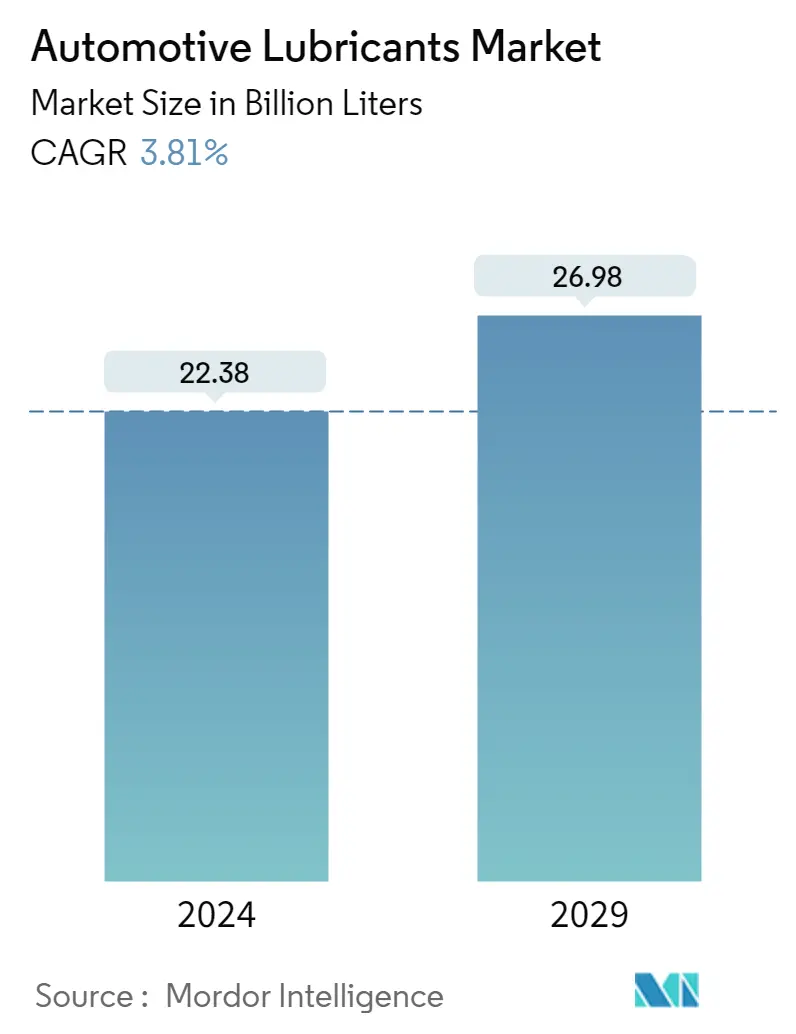
| Study Period | 2019 - 2029 |
| Base Year For Estimation | 2023 |
| CAGR (2024 - 2029) | 3.81 % |
| Fastest Growing Market | Asia Pacific |
| Largest Market | Asia Pacific |
| Market Concentration | High |
Major Players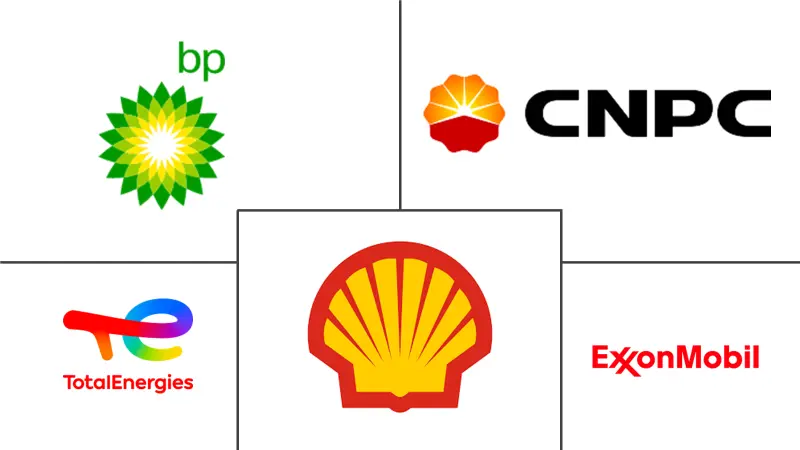
*Disclaimer: Major Players sorted in no particular order |
Automotive Lubricants Market Analysis
The Automotive Lubricants Market size is estimated at 22.38 Billion liters in 2024, and is expected to reach 26.98 Billion liters by 2029, growing at a CAGR of 3.81% during the forecast period (2024-2029).
Due to the COVID-19 outbreak, nationwide lockdowns worldwide, disruption in manufacturing activities and supply chains, and production halts negatively impacted the market in 2020. However, the conditions started recovering in 2021, restoring the market's growth trajectory.
- In the short term, one of the major factors, like increasing EV production globally and demand from the automotive components industry, is expected to drive the market.
- On the flip side, low adoption rates of synthetic lubricants due to stringent environmental regulations for waste oil disposal are expected to hinder the market's growth.
- The bio-based lubricants development is expected to act as a market opportunity for the market studied.
- Asia-Pacific region is expected to dominate the market studied during the forecast period.
Automotive Lubricants Market Trends
Increasing Usage of Engine Oils
- Engine oils are widely used for lubricating internal combustion engines in different types of automobiles. It is used for various applications such as wear reduction, corrosion protection, and ensuring the smooth operation of the engine internals.
- The oils create a thin film between the moving parts to enhance heat transfer and reduce tension during contact.
- The automobile manufacturing industry in Germany is a prominent shareholder of the overall automotive production in the European region. The country hosts major car-making brands, including Volkswagen, Mercedes-Benz, Audi, BMW, Porsche, etc. The consistent investments in R & D activities and the increasing automotive production in the country are likely to support the lubricants market growth.
- Even though general car sales in the country declined, electric vehicle registrations grew tremendously over the past few years. This growth is supported by the government's push toward all-electric cars by 2040.
- As of March 2022, Volkswagen approved an investment in a new electric car plant. The new German factory construction, which would be built next to the group's historic home in Wolfsburg, would begin in 2023, with production set to begin in 2026.
- According to data published by OICA, global automobile production increased from 80,205,102 in 2021 to 85,016,728 in 2022, boosting engine oil demand.
- All the factors above are expected to propel the market's growth studied.
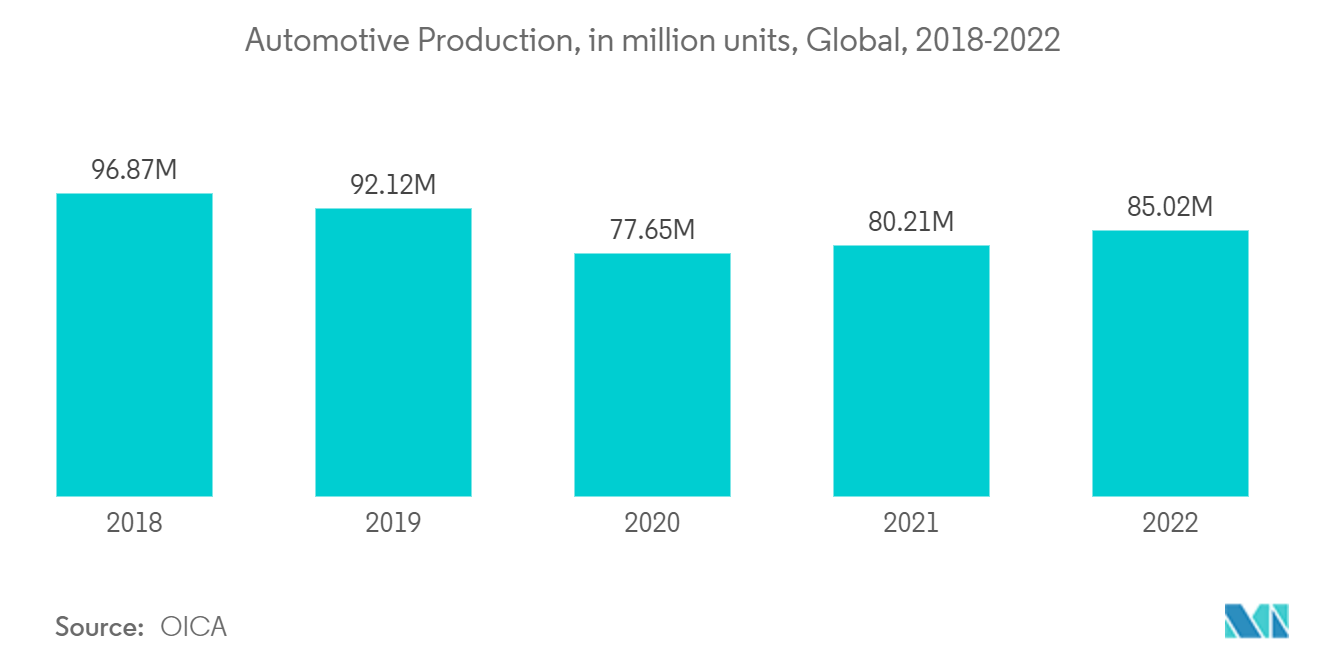
Asia-Pacific is Expected to Dominate the Market
- Rapid industrialization in the Asia-Pacific region is expected to drive market growth. The growth of industries such as automotive in the region will result in lubricant growth.
- Also, the automotive industry consumes lubricants in automotive parts for finishes which are anticipated to boost the market's growth. Asia-Pacific is anticipated to hold a major market share, with the largest consumption coming from developing and emerging countries such as China, Malaysia, India, Thailand, Indonesia, and Sri Lanka.
- According to OICA, automotive production in the region reached 50,020,793 units in 2022, increasing by 7% from 46,768,800 units produced in 2021. China was the largest producer in 2022, followed by Japan, India, and South Korea.
- Furthermore, in the first nine months of 2022, Indian passenger car sales remained strong due to savings, lower interest rates, and an increasing preference for personal mobility, which convinced customers to buy new cars. As a result, new car registrations in India grew by around 20.2% in the first three quarters of 2022 to reach 2.8 million units. Also, Government reforms such as "Aatma Nirbhar Bharat" and "Make in India" programs supported the automotive industry in the country.
- Further, the automobile industry in India is witnessing switching trends as the consumer inclination toward battery-operated vehicles is on the higher side.
- Moreover, the government of China estimates a 20% penetration rate of electric vehicle production by 2025. It is reflected in the electric vehicle sales trend in the country, which went record-breaking high in 2022. As per the China Passenger Car Association, the country sold 5.67 million EVs and plug-ins in 2022, almost double the sales figures achieved in 2021. The market is anticipated to increase the demand for automotive lubricants in the country, poised to continue sales at this momentum.
- The factors above and supportive government regulations are contributing to the increased demand for lubricants in the region.
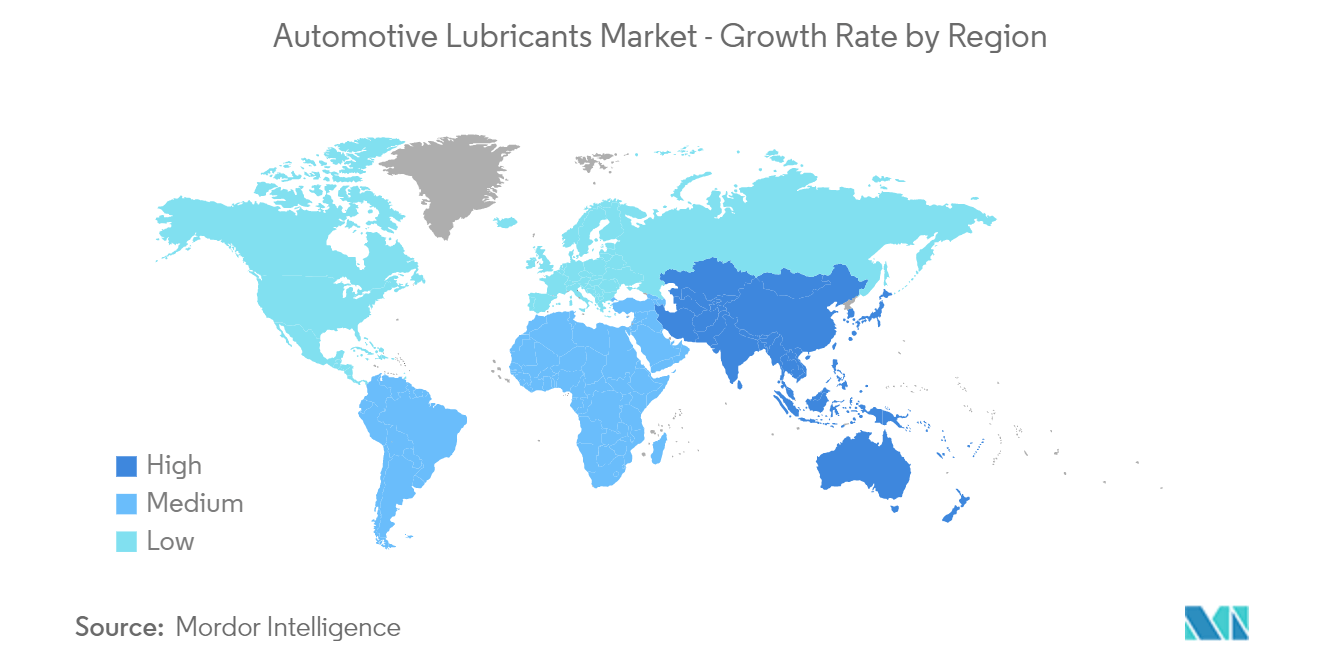
Automotive Lubricants Industry Overview
The automotive lubricants market is partially consolidated, with intense competition among the top players. These major companies include Shell PLC, China Petrochemical National Corporation, BP PLC, Exxon Mobil Corporation, and TotalEnergies.
Automotive Lubricants Market Leaders
-
BP p.l.c.
-
Exxon Mobil Corporation
-
Shell PLC
-
China Petrochemical National Corporation
-
TotalEnergies
*Disclaimer: Major Players sorted in no particular order
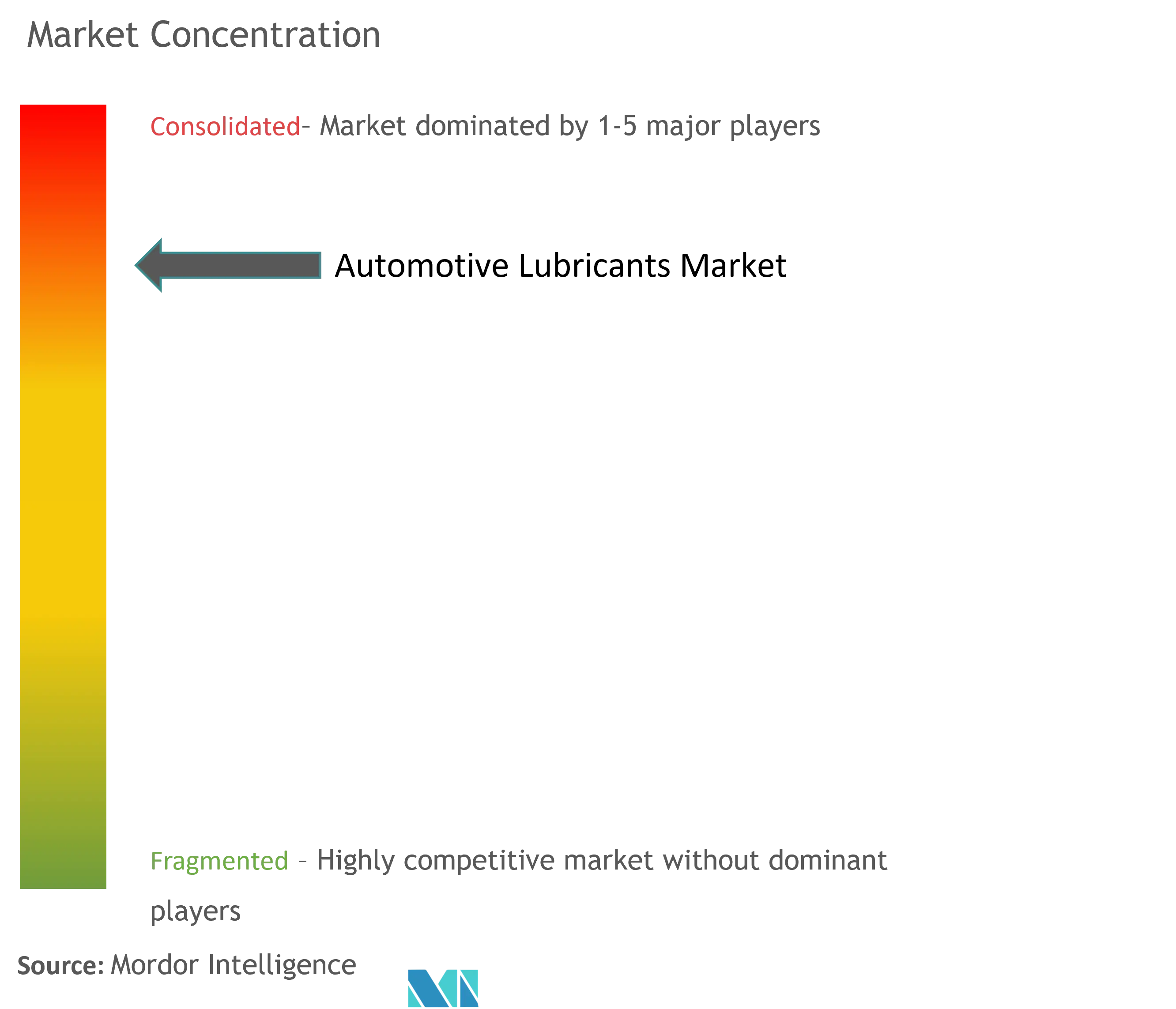
Automotive Lubricants Market News
- October 2022: TotalEnergies signed an agreement with MG Motor to develop a new range of lubricants in Chile. The new product is expected to be MG Oil, the first MG Motor oil specially formulated for automobiles. This new product is expected to be manufactured entirely in Chile, which will likely help TotalEnergies strengthen its geographical presence there.
- August 2022: Valvoline Inc. announced it is expected to sell its global products business to oil company Saudi Arabian Oil Co. for USD 2.65 billion in cash as the motor oil maker sharpens its focus on its retail services unit. Valvoline's global products unit sells lubricants and other preventive maintenance products for light- and heavy-duty vehicles.
Automotive Lubricants Market Report - Table of Contents
1. INTRODUCTION
- 1.1 Study Assumptions
- 1.2 Scope of the Study
2. RESEARCH METHODOLOGY
3. EXECUTIVE SUMMARY
4. MARKET DYNAMICS
-
4.1 Drivers
- 4.1.1 Increasing Demand from EV Production Worldwide
- 4.1.2 Growing Demand for Automotive Components in Emerging Economies
- 4.1.3 Other Drivers
-
4.2 Restraints
- 4.2.1 Stringent Environmental Regulations Regardng Used Oil Disposal
- 4.2.2 Other Restraints
- 4.3 Industry Value Chain Analysis
-
4.4 Porter's Five Forces Analysis
- 4.4.1 Bargaining Power of Suppliers
- 4.4.2 Bargaining Power of Consumers
- 4.4.3 Threat of New Entrants
- 4.4.4 Threat of Substitute Products and Services
- 4.4.5 Degree of Competition
5. MARKET SEGMENTATION (Market Size in Volume)
-
5.1 Product Type
- 5.1.1 Engine Oil
- 5.1.2 Transmission and Gear Oils
- 5.1.3 Hydraulic Fluids
- 5.1.4 Greases
-
5.2 Vehicle Type
- 5.2.1 Passenger Vehicles
- 5.2.2 Commercial Vehicles
- 5.2.3 Motorcycles
-
5.3 Geography
- 5.3.1 Asia-Pacific
- 5.3.1.1 China
- 5.3.1.2 India
- 5.3.1.3 Japan
- 5.3.1.4 South Korea
- 5.3.1.5 ASEAN Countries
- 5.3.1.6 Rest of Asia-Pacific
- 5.3.2 North America
- 5.3.2.1 United States
- 5.3.2.2 Canada
- 5.3.2.3 Mexico
- 5.3.3 Europe
- 5.3.3.1 Germany
- 5.3.3.2 United Kingdom
- 5.3.3.3 Italy
- 5.3.3.4 France
- 5.3.3.5 Rest of Europe
- 5.3.4 South America
- 5.3.4.1 Brazil
- 5.3.4.2 Argentina
- 5.3.4.3 Rest of South America
- 5.3.5 Middle-East and Africa
- 5.3.5.1 Saudi Arabia
- 5.3.5.2 South Africa
- 5.3.5.3 Rest of Middle-East and Africa
6. COMPETITIVE LANDSCAPE
- 6.1 Mergers and Acquisitions, Joint Ventures, Collaborations, and Agreements
- 6.2 Market Share(%)**/Ranking Analysis
- 6.3 Strategies Adopted by Leading Players
-
6.4 Company Profiles
- 6.4.1 AMSOIL INC.
- 6.4.2 Bharat Petroleum Corporation Limited
- 6.4.3 BP PLC (Castrol)
- 6.4.4 Chevron Corporation
- 6.4.5 China National Petroleum Corporation
- 6.4.6 China Petroleum & Chemical Corporation
- 6.4.7 ENEOS
- 6.4.8 Exxon Mobil Corporation
- 6.4.9 FUCHS
- 6.4.10 Gazprom Neft PJSC
- 6.4.11 Gulf Oil Lubricants India Ltd (Hinduja Group)
- 6.4.12 Hindustan Petroleum Corporation Limited
- 6.4.13 Indian Oil Corporation Ltd
- 6.4.14 LUKOIL
- 6.4.15 Motul
- 6.4.16 Petrobras
- 6.4.17 PETRONAS Lubricants International
- 6.4.18 Phillips 66 Company
- 6.4.19 PT Pertamina Lubricants
- 6.4.20 Repsol
- 6.4.21 Shell PLC
- 6.4.22 SK Lubricants Co. Ltd
- 6.4.23 TotalEnergies
- 6.4.24 Valvoline Inc.
- 6.4.25 Veedol International Limited
- *List Not Exhaustive
7. MARKET OPPORTUNITIES AND FUTURE TRENDS
- 7.1 Development of Bio Based Lubricants
- 7.2 Other Opportunities
Automotive Lubricants Industry Segmentation
Lubricant is a fluidic material that reduces friction between contact surfaces to avoid wear and tear. Depending upon the end-uses, it is prepared with specific additives and specific group base oils. Automotive lubricants are mainly used as engines, gear, and hydraulic oils. The automotive lubricants market is segmented by product type, vehicle type, and geography. The market is segmented by product type into engine oil, transmission and gear oils, hydraulic fluid, and greases. The market is segmented by vehicle type into passenger vehicles, commercial vehicles, and motorcycles. The report also covers the market size and forecasts for the automotive lubricants market in 15 countries across major regions. For each segment, the report offers market size and forecasts for the global automotive lubricants market in volume (million liters) for all the above segments.
| Product Type | Engine Oil | |
| Transmission and Gear Oils | ||
| Hydraulic Fluids | ||
| Greases | ||
| Vehicle Type | Passenger Vehicles | |
| Commercial Vehicles | ||
| Motorcycles | ||
| Geography | Asia-Pacific | China |
| India | ||
| Japan | ||
| South Korea | ||
| ASEAN Countries | ||
| Rest of Asia-Pacific | ||
| Geography | North America | United States |
| Canada | ||
| Mexico | ||
| Geography | Europe | Germany |
| United Kingdom | ||
| Italy | ||
| France | ||
| Rest of Europe | ||
| Geography | South America | Brazil |
| Argentina | ||
| Rest of South America | ||
| Geography | Middle-East and Africa | Saudi Arabia |
| South Africa | ||
| Rest of Middle-East and Africa |
Automotive Lubricants Market Research FAQs
How big is the Automotive Lubricants Market?
The Automotive Lubricants Market size is expected to reach 22.38 billion liters in 2024 and grow at a CAGR of 3.81% to reach 26.98 billion liters by 2029.
What is the current Automotive Lubricants Market size?
In 2024, the Automotive Lubricants Market size is expected to reach 22.38 billion liters.
Who are the key players in Automotive Lubricants Market?
BP p.l.c., Exxon Mobil Corporation, Shell PLC, China Petrochemical National Corporation and TotalEnergies are the major companies operating in the Automotive Lubricants Market.
Which is the fastest growing region in Automotive Lubricants Market?
Asia Pacific is estimated to grow at the highest CAGR over the forecast period (2024-2029).
Which region has the biggest share in Automotive Lubricants Market?
In 2024, the Asia Pacific accounts for the largest market share in Automotive Lubricants Market.
What years does this Automotive Lubricants Market cover, and what was the market size in 2023?
In 2023, the Automotive Lubricants Market size was estimated at 21.56 billion liters. The report covers the Automotive Lubricants Market historical market size for years: 2019, 2020, 2021, 2022 and 2023. The report also forecasts the Automotive Lubricants Market size for years: 2024, 2025, 2026, 2027, 2028 and 2029.
Automotive Lubricants Industry Report
The global automotive lubricants market report provides a comprehensive market analysis, highlighting key market trends, market growth, and market leaders. The report covers various product types, including engine oil, transmission oils, hydraulic fluids, and greases. It also segments the market by vehicle types such as passenger vehicles, commercial vehicles, and motorcycles, and by geography, including regions like Asia-Pacific, North America, Europe, South America, and the Middle-East and Africa.
The market analysis includes a detailed industry overview, industry trends, and market segmentation. The report discusses the market value and market size, offering insights into the market forecast and market predictions. It also includes a market review and market outlook, providing a thorough understanding of the industry's growth rate and market data.
Industry reports and industry research are essential for understanding the market's dynamics. The report includes industry statistics and industry information, offering a comprehensive industry analysis. Market leaders are identified, and the market growth is analyzed based on historical data and future projections.
The report is available as a free report PDF download, providing a report example for those interested in the industry's market trends and market share. Research companies can benefit from the report's detailed market forecast and market segmentation, which offer valuable insights into the industry's future.
Overall, the automotive lubricants market report is a valuable resource for understanding the industry's current state and future outlook. It provides a detailed analysis of market data, industry sales, and market growth, making it an essential tool for industry professionals and researchers.



